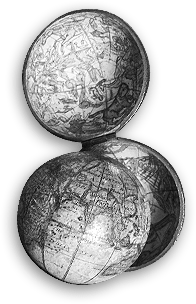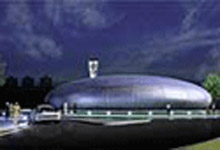Zoomorphic Beastiary
The Carp
A series of so-called Beached Houses by Michael Sorkin Studio are individually named Carp, Ray and Slug. Each is a straightforward two-storey house, but the animal resemblance remains strong in the overall form, and in the cladding which resembles scales. The asymmetric kick in the tail increases the aura of life.
The Dragonfly
Tsui Design and Research examined the wing action of a dragonfly during studies for the design of the Reyes House in Oakland, California. The house is an example of Tsui’sevolutionary architecture, which he believes ‘implements the evolutionary practices of nature as a synthesis of billions of years of evolution applied to immediate needs and circumstances of form, function and purpose.’
The Bird
Birds are among the commonest animal forms in architecture, but did their concrete wings ever flap? They do now at Calatrava Valls’s addition to the Milwaukee Art Museum, where 72 slender steel beams, up to 32 metres in length and cantilevered from a tilted spinal hinge, are raised and lowered in a huge kinetic sculpture.
The Shrimp
Morecambe in Lancashire is famous for its shrimp, but this homage to the town is 40 storeys high, and just one in a sequence of wild seafront constructions. Unfortunately, Birds Portchmouth Russum’s crustacean extravaganza proved too much for the town’s burghers to swallow, and it was never built.
The Cocoon
The second phase of the Darwin Centre at the Natural history Museum in London will house 28 million preserved insect specimens from Darwin’s and others’ voyages. Appropriately for an entomological archive, C.F. Møller’s design resembles a giant cocoon slotted in its own specimen box.
The Whale
The shape of the timber-clad concrete Turner Centre gallery building, to be completed by 2005 in Margate, England to a design by Snøhetta, is deliberately ambiguous - is it a whale, a shark’s fin, a submarine conning tower, a pebble? Whichever, it will be a magnet to draw the curious to the town and catalyse the area’s economic regeneration.
The Cockatoo
The undulating roofline of Gregory Burgess Architects’ Brambuk Living Cultural Centre in Victoria, Australia, makes reference to the cockatoo, the totemic symbol of some of the aborigine communities served by the centre. Other images abound - eagle, whale, eel - with similar significance for the indigenous tribes, and interest for visitors too.
The Diplodocus
Like a dinosaur skeleton, this 200-metre pedestrian bridge, an early project by Marks Barfield, the architects of the London Eye, is not a traditional arch with fixed feet but a single cantilever. Its huge Y-shaped vertebrae carry the compressive load while steel cable ‘tendons’ provide counteracting tension. A pedestrian moving walkway runs along the top.
The Octopus
Arca del Mundo, a tourist attraction on the theme of ecology commissioned by the Costa Rica government, takes a more explicit biological form than most of Greg Lynn’s projects. The architect has suspended his usual rules for the ‘evolution’ of form and allowed himself to produce a design inspired by local plants and animals, not least the octopus.
The Sea Sponge
Foster and Partners’ new arrival on the London skyline, an office building for the Swiss Re insurane company, has a form is close to that of various sea sponges which build up a skeletal tracery of sometimes amazing geometric regularity as they grow. The analogy extends to aspects of the building’s function, too.
The Starfish
Numerous formal rules govern the design of the classic English country house, and a surprising number of them presist - radically reinterpreted - in Ushida Findlay’s speculative starfish design. The radiating limbs are like the traditional wings of the house, occupied at different times of the day according to the position of the sun.
The Sea Urchin
This sadly unbuilt retail warehouse at Merry Hill near Birmingham, England, began life as a clay model, but once the sea urchin shape suggested itself, architects Wilkinson Eyre decided to accentuate the resemblance which is seen not only in the overall form and structure but in the pimpled cladding.
There’s more about the exhibition on the Victoria & Albert Museum website.

 The Carp
The Carp The Dragonfly
The Dragonfly The Bird
The Bird The Shrimp
The Shrimp The Cacoon
The Cacoon The Whale
The Whale The Cockatoo
The Cockatoo The Diplodocus
The Diplodocus The Octopus
The Octopus The Sea Sponge
The Sea Sponge The Starfish
The Starfish The Sea Urchin
The Sea Urchin